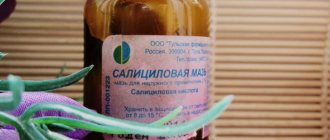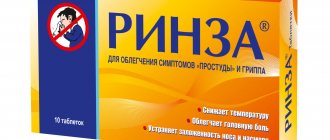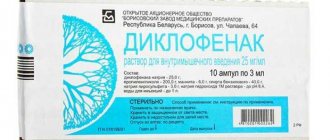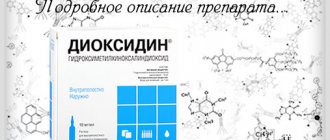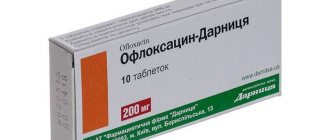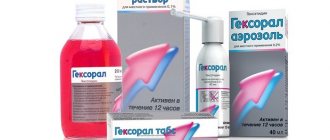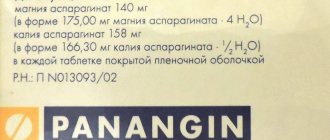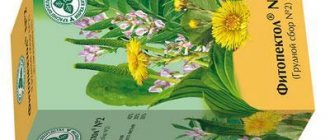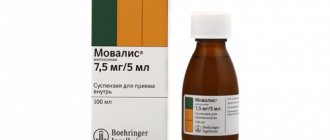Antibiotics are organic substances that by their nature are secondary metabolites of microorganisms. They are used by microbes as a defense, allowing them to survive in the face of strong competition. People use these compounds to fight pathogenic microorganisms. One of such effective antibiotics today is Gentamicin.
About the drug
The principle of action of the main component of “Gentamicin” in ampoules is as follows: when the drug enters the body, the protein synthesis of bacterial elements is blocked, thereby preventing their further reproduction. The medicine disrupts the transfer of genetic information by pathogenic organisms. Thus, the substance has a bacteriostatic effect. In large dosages, the drug leads to disruption of the integrity of bacterial cell membranes, thereby causing the death of the infectious agent and producing a bactericidal effect.
“Gentamicin” in ampoules effectively eliminates the following pathogenic organisms: Escherichia coli along with Shigella, Salmonella, Proteus, Klebsiella, staphylococci and streptococci. Gentamicin sulfate can be taken for quite a long time without fear of parasites quickly becoming resistant to this drug. True, one should remember about the high nephrotoxicity, that is, we are talking about the negative effect of the drug on the patients’ kidneys and auditory nerve. Therefore, it is extremely dangerous to prescribe this substance to young children for more than a week.
When taken orally, a uniform distribution of the drug is observed in the tissues of the body and in the extracellular fluid. "Gentamicin" can penetrate the placental barrier, which must be taken into account in case of pregnancy. A large proportion of the drug (approximately ninety percent) is excreted from the human body through the kidneys, and the remaining 10% through the bile ducts.
Pharmacological properties
The pharmacological action is based on the binding of the aminoglycoside to the ribosomal subunit, namely 30S, as a result of which the binding site of transfer RNA with the ribosome is blocked.
This leads to the fact that the translation process becomes impossible, and the protein, accordingly, is not synthesized. This effect of the antibiotic not only disrupts all metabolic processes in the bacterial cell, but also prevents its reproduction. At high concentrations of gentamicin, the cell membrane is destroyed, which leads to the death of the microorganism.
Aminoglycoside is active against a number of bacteria, overcoming all their defense mechanisms:
- Escherichia coli;
- Shigella spp;
- Salmonella spp;
- Enterobacter spp;
- Klebsiella spp;
- Serratia spp.
- Proteus spp;
- Pseudomonas aeruginosa;
- Acinetobacter spp.
The above microorganisms are gram-negative, which require oxygen to function. The antibiotic also has a destructive effect on gram-positive bacteria - staphylococci and streptococci.
However, not all microorganisms are sensitive to this organic compound, so some of them are able to withstand very high concentrations of the antibiotic. These bacteria are:
- Neisseria meningitidis is the causative agent of meningococcal infection.
- Treponema pallidum - causes syphilis.
- Some strains of streptococci.
- All anaerobic microorganisms.
Since Gentamicin is very poorly absorbed into the blood in the small intestine, the drug is not available in tablet form.
To introduce an organic compound into the body, a parenteral method is used (injections intravenously and intramuscularly, applying the active substance to the skin or mucous membranes).
With intramuscular and intravenous administration, the concentration of the antibiotic reaches maximum values in a short time - 0.5−1.5 hours and 15−30 minutes, respectively. It is important to note that the aminoglycoside practically does not bind to blood proteins.
The active substance can penetrate the placenta and also slightly accumulate in breast milk. It is found in small concentrations in adipose tissue, muscles, cerebrospinal fluid, and bronchial secretions.
The drug is excreted by the kidneys, and to a lesser extent, along with bile during the day. When using the ointment, absorption of the aminoglycoside through the skin into the blood practically does not occur. The exception is open wounds.
Indications
Indications for treatment with Gentamicin in ampoules may include various conditions in patients. The instructions indicate diseases that require the use of the drug parenterally (via intravenous administration or intramuscular injection):
- The presence of acute infectious and inflammatory diseases that affect the digestive system (we are talking about cholecystitis and cholangitis), the genitourinary system (pyelonephritis along with cystitis and prostatitis), the respiratory system (pneumonia or pleural empyema), bones and joints.
- In case of severe conditions that threaten the life of patients, that is, sepsis, peritonitis, wound infection, and so on.
- Against the background of purulent processes of connective tissues and skin, that is, with abscesses and boils, as well as with osteomyelitis.
- This drug can be used in cases of pyoderma, folliculitis and furunculosis.
- The medicine is effective in the presence of infected wounds, cuts, burns and bites.
- Against the background of staphylococcal sycosis, seborrheic dermatitis, complicated by a bacterial infection.
- In the presence of profuse acne and secondary infection of the skin.
- Among other things, the substance in question can be used in the treatment of blepharitis, purulent conjunctivitis, dacryocystitis, keratitis, keratoconjunctivitis and meibomitis as prescribed by a specialist.
There is an additional complex of drugs, which consists of betamethasone, clotrimazole and gentamicin. Similar medications are prescribed for the following dermatological pathologies:
- Allergic or simple dermatitis, complicated by the addition of a bacterial infection.
- Limited and diffuse neurodermatitis.
- The combination of gentamicin with betamethasone and clotrimazole is considered highly effective for eczema against the background of lichen versicolor.
What else does the instructions for Gentamicin in ampoules tell us?
Gentamicin ointment during pregnancy
- blepharitis;
- conjunctivitis, keratoconjunctivitis;
- keratitis;
- barley;
- dacryoadenitis (inflammation of the lacrimal gland and its ducts);
- infected burns and corneal injuries;
- creeping ulcer of the cornea;
- complicated corneal herpes zoster;
Gentamicin ointment is dispensed from pharmacies strictly according to a doctor's prescription.
Dexa gentamicin ophthalmic ointment is a translucent, viscous, white-yellow substance.
The combination of these two components allows the drug to have a beneficial effect, provided that the beneficial properties of each substance are mutually enhanced.
Due to this, the process of eliminating pathology occurs in the shortest possible time.
The average price of dexa-gentamicin ointment in Russian pharmacies is 150 rubles. Depending on the distributor, the cost may vary in the range of 110-190 rubles.
Bacterial skin lesions, pyoderma, folliculitis, furunculosis, wound and burn skin infections, infected varicose ulcers.
At room temperature.
3 years.
Do not use after the expiration date stated on the package.
Contraindications
The medicine in question cannot be used in a number of cases:
- In case of hypersensitivity (including to other aminoglycosides).
- Against the background of acoustic neuritis.
- In case of severe chronic kidney failure with azotemia and uremia.
- Against the background of myasthenia gravis, diabetes mellitus, otitis media.
- During lactation or pregnancy, the medication is used only as a last resort.
It is prohibited to prescribe this drug simultaneously or sequentially with other nephrotoxic medications, and in addition, with loop diuretics. With great caution, "Gentamicin" in ampoules is prescribed to patients with parkinsonism, botulism (the fact is that aminoglycosides can cause disruption of nerve and muscle transmission, which leads to a further weakening of the tone of skeletal muscles). It is used with caution in case of dehydration. It is also prescribed to newborns, nursing mothers and older people only when absolutely necessary.
Description of the drug
Gentamicin ointment is an effective antimicrobial agent that inhibits the activity of pathogenic bacteria. The drug is a thick jelly-like substance with a specific antibiotic odor.
The Gentamicin therapeutic line also includes an aerosol and solutions for parenteral administration. The antibacterial component is also included in products for the treatment of eye pathologies - ophthalmic drops and ointments. The drug is actively used in dermatology, allergology, and traumatology.
What is Gentamicin ointment used for:
- therapy of diseases caused by infection with pathogenic bacteria;
- treatment of pathologies caused by activation of microorganisms of opportunistic microflora;
- prevention of tissue infection after traumatic injury or surgery;
- infection of tissues by pathogenic bacteria when they are damaged by viruses or pathogenic fungi.
To avoid harm to health, it is necessary to consult a dermatologist before carrying out therapy. The fact is that with the help of the ointment it is possible to inhibit only microorganisms sensitive to gentamicin. If they have developed resistance to the antimicrobial component, then treatment will not give a positive result.
To identify the sensitivity of microorganisms to the drug, a number of bacteriological studies are required.
Clinical and pharmacological group
Gentamicin ointment is included in the clinical and pharmacological group of external agents, the active ingredients of which are antibiotics. The active substance (gentamicin sulfate) is an aminoglycoside antibiotic.
pharmachologic effect
The main pharmacological effect of Gentamicin ointment is the suppression of bacterial protein synthesis. Proteins are necessary for microbes to build intercellular membranes and further reproduction. Gentamicin is quickly adsorbed into the epidermal layers, integrating into the cells of infectious pathogens.
It blocks bacterial ribosomes, disrupting the production of proteins and the construction of the RNA chain. As a result, pathogenic microorganisms lose the ability to grow and actively reproduce. Thus, the drug has a complex effect on the course of the infectious disease:
- relief of acute or chronic inflammatory process by destroying bacteria;
- reduction in the intensity of swelling, pain, including skin itching;
- acceleration of regeneration processes due to improved blood circulation and microcirculation.
The pharmacological drug exhibits activity against aerobic gram-negative bacteria. First, the growth of Klebsiella, Shigella, and Escherichia coli slows down and then completely stops. The antibacterial component prevents the proliferation of certain strains of streptococci, as well as epidermal and Staphylococcus aureus.
Release form and composition
The ointment is packaged in an aluminum, hermetically sealed tube of 15 g. Secondary packaging is a cardboard box, which also contains instructions for use.
Gentamicin ointment (cream) is produced by many domestic pharmaceutical factories. In addition to the active ingredient - gentamicin - the 0.1% drug contains excipients. The qualitative and quantitative composition of additional components varies depending on the manufacturer. The ointment base can be formed from paraffins, petroleum jelly, sodium edetate and other chemical compounds.
Auxiliary ingredients contribute to the rapid penetration of the antibiotic into pathological foci. Due to them, a film is formed on the surface of the epidermis, preventing secondary infection.
Storage conditions and periods
The drug should be stored in a dark place at a temperature not exceeding 20°C. In unopened packaging, Gentamicin ointment retains its therapeutic properties for 3 years. Once the tube has been sealed, it should be used within 4-5 weeks. Deterioration of the external product is indicated by changes in color, smell, and consistency. Small children should not have access to Gentamicin ointment.
Instructions for "Gentamicin" in ampoules and dosage
In pediatric practice, gentamicin sulfate is prescribed only by attending physicians after examining and assessing the child’s condition. The instructions for the drug note that the dosage is selected in each case strictly individually. Doctors also take into account the nature of the disease along with the severity of its course, the localization of the outbreak and the sensitivity of pathogenic agents to the antibiotic. It is often prescribed in ampoules. After intramuscular injection, the substance quickly enters the bloodstream, and maximum plasma concentrations are reached after half an hour.
The instructions for use of Gentamicin in ampoules indicate that with the parenteral method of administration (intravenous or intramuscular), the daily dosage of the antibiotic for adult patients is from 3 to 5 milligrams per kilogram of weight. This amount of product should be divided into three doses. The described medicine is prescribed, as a rule, for a maximum of a week.
Dosage
The dosage of the drug is selected for each patient individually, as is the case with any other antibiotic. During treatment, it is necessary to take into account that the aminoglycoside will affect not only pathogenic microorganisms, but also resident microflora. To select the dose, the following are taken into account:
- general condition of the patient;
- patient's body weight;
- presence of complications of the disease;
- sensitivity of bacteria.
For adults with a bacterial infection, the daily dose should be 3−5 mg/kg body weight. In case of a disease with complications, it is recommended to increase the dose. Taking the drug should be divided into 3 times. In this case, the antibiotic must be administered either intramuscularly or intravenously. The course of treatment usually lasts no more than 10 days.
If the dose is higher than average and the medication is taken for a long time, it is necessary to monitor kidney function. At the first signs of gentamicin toxicity on the body, the drug should be discontinued or replaced with another.
The recommended dose for children should not exceed 7.5 mg/kg body weight. The antibiotic is administered intramuscularly or intravenously. Gentamicin is also allowed to be used for infectious diseases in newborns, but no more than once every half day. The drug is also prescribed to children for diseases of the excretory system, which are accompanied by a significant increase in body temperature or neutropenia (decreased number of neutrophils in the blood).
For patients with impaired renal function or inflammation of the serous membranes, it is recommended to reduce the dosage of the antibiotic, but at the same time increase the frequency of its administration.
When administering the drug intravenously, Gentamicin is used in ampoules or an injection solution that is introduced into the body using a dropper. It is important to note that the open drug must be used within 2 hours. It is necessary to inject aminoglycoside without mixing the medicine with other medications at the same time.
If Gentamicin is used to treat eye diseases, then the antibiotic must be either dropped in pure form or diluted with saline 1:1. The saline solution must be sterile.
How should children use the product?
For children over two years of age, injections of the antibiotic "Gentamicin" in ampoules can be administered at 5 milligrams per kilogram per day, divided into three doses. This antibiotic can be prescribed to newborn babies (including premature babies). The daily norm in this case is prescribed individually, and can range from 2 to 5 milligrams per kilogram of weight. The dosage of Gentamicin in ampoules must be strictly observed.
If the baby has a disturbance in the functioning of the urinary organs, then in this situation a dosage adjustment will be required with a decrease in the daily volume of the drug. Next, let’s find out what those who have already taken it report on the Internet about the antibiotic in question. Is it considered an effective medicine?
Contraindications, side effects and overdose
The main contraindication to the use of this ointment is individual intolerance to its components. If the patient is intolerant to the use of aminoglycoside antibiotics, then it is also better to avoid using Gentamicin ointment. Finally, it cannot be used for viral and fungal infections.
In some patients, this drug may cause the following side effects:
- itching and burning;
- increased tearfulness;
- change in visual acuity (usually short-term);
- redness of the sclera;
- swelling and swelling of the eyelids.
An overdose of Gentamicin ointment for ophthalmic use is extremely unlikely. Excessive use of the drug can lead to side effects that will disappear when the concentration of the active component decreases.
When using Gentamicin ointment, you need to know that the combined use of antibacterial drugs from the group of penicillins and cephalosporins enhances the overall antimicrobial effect. Hormones - glucocorticosteroids - enhance the effect of gentamicin. By the way, it was this effect that the manufacturers of combination products were based on.
Reviews about this medicine
As patients report in their comments, this medication is a highly effective drug that helps with a wide range of various diseases. True, the described substance also has some negative manifestations.
For example, reviews of “Gentamicin” in ampoules indicate that often, against the background of the drug’s prescription, some side effects from the digestive system may develop in the form of nausea, vomiting and liver dysfunction; therefore, an increase in the enzymes of this enzyme is often observed in the blood organ and bilirubin.
Sometimes dizziness may occur along with headaches and increased drowsiness, as well as decreased hearing and the appearance of symptoms of damage to the vestibular apparatus. With prolonged use of this medicine in high dosages, according to patients, cochlear neuritis, that is, irreversible deafness, can develop.
Among other things, there are complaints about problems in the functioning of the genitourinary system. For example, people experience proteinuria or microhematuria, when a small amount of blood is detected in the urine. Kidney failure may even develop.
It is also noted that it is possible to develop allergic reactions in the form of skin rash, urticaria, and Quincke's edema. To avoid this, before giving Gentamicin injections, it is recommended to conduct a scratch test. To do this, use a scarifier or a needle to apply a small scratch to the skin of the forearm and drop a few drops of the drug onto it. After this, you should monitor the reaction for thirty minutes. If redness and local swelling are not observed, the drug can be administered and used for treatment.
Doctors, in turn, report in reviews that the drug in question can sometimes cause the development of anemia in patients along with a decrease in formed elements, namely platelets and leukocytes.
Instructions for use
Gentamicin ointment is used according to the instructions for use attached to each package. In some cases, the doctor reduces individual dosages. This is necessary if there is a history of pathologies of the kidneys, liver, or a sharp decrease in immunity.
Drugs from other clinical and pharmacological groups are often included in treatment regimens. The antimicrobial agent is combined with regeneration stimulants and medications to improve blood circulation.
Indications and contraindications
External use of a product with a bactericidal effect helps fight infectious and inflammatory skin diseases. Indications for the use of Gentamicin ointment include various damage to the epidermis. It is prescribed to patients with dermatitis, the course of which is complicated by the addition of a secondary bacterial infection.
The drug is also included in therapeutic regimens for diagnosing the following pathologies:
- pyoderma, including purulent;
- superficial folliculitis;
- furunculosis;
- sycosis affecting hair follicles;
- paronychia, or inflammation of the periungual folds;
- dermatitis, acne, complicated by bacterial infection;
- bacterial infection of the dermis affected by various viruses or pathogenic yeast-like fungi;
- wounds of various origins - burns, ulcers, insect bites;
- varicose ulcers.
If hypersensitivity to the active ingredient or one of the auxiliary components is detected, the drug is not prescribed. Due to the teratogenic effect of gentamicin, it is strictly prohibited for use by pregnant and lactating women. Contraindications for use are also inflammation of the auditory nerve, autointoxication syndrome against the background of renal failure.
Directions for use and doses
The doctor always recommends applying a dose of the product after treating the affected area. Typically, antiseptic solutions are used for this - Furacilin, Miramistin, Chlorhexidine. The possibility of combining an antibacterial drug with hydrogen peroxide, iodine or brilliant green should be discussed with a dermatologist.
Single and daily doses, as well as the duration of treatment, are determined by the doctor. The drug is evenly distributed on the affected areas of the skin 1 to 2 times a day. It is not recommended to carry out external treatment for longer than 10 days. According to the instructions for use, the decision on the use of Gentamicin ointment for children is made by the doctor.
Side effects and special instructions
When Gentamicin ointment is applied to damaged skin, the risk of systemic side effects increases significantly. A sufficient amount of ingredients penetrates into the bloodstream to disrupt the functioning of the liver, kidneys, and stomach. But more often during therapy a local allergic reaction develops. Its leading symptoms are swelling and redness of the skin, and the appearance of rashes.
During pregnancy, the use of Gentamicin ointment is strictly prohibited. During pregnancy, it is used in exceptional cases.
Analogues of "Gentamicin" in ampoules
Today in pharmacies you can find a whole range of various analogues, in which the active component is represented by an antibacterial substance of the aminoglycoside series. First of all, it is worth mentioning “Garamycin” along with “Gentamicin-Teva”, “Gentamicin-Akos”, “Gentatsikol”, “Septop”, “Gentsin” and the like. It is worth noting that all new generation Gentamicin analogues in ampoules have a similar mechanism of action along with dosage regimen, indications and contraindications.
Will Gentamicin-Akos help with a disease called paronychia?
Treatment of inflamed periungual ridges is often accompanied by antibacterial therapy. The cause of the disease can be various factors: a viral or fungal infection, trauma, radiation, improperly done manicure, and so on. If suppuration begins, which is caused by paronychia, treatment must be accompanied by the use of antibiotics.
"Gentamicin-Akos" is applied to the inflamed area in the form of a compress. The suppuration can be opened beforehand. But you cannot carry out such manipulation on your own. To avoid making things worse for yourself, you need to see a surgeon. After the procedure, apply a thin layer of the drug to the periungual fold, capturing part of the healthy skin. Apply a sterile dressing and put on a finger guard. This structure cannot be wetted. The bandage needs to be changed 3-4 times a day.
Does it belong to the new generation of drugs?
It must be emphasized that the drug is not classified as a new generation of antibiotics, but it is currently quite widely used for the treatment of microbial diseases. In this regard, the pharmaceutical market today offers a large number of products containing the substance gentamicin. Moreover, we are talking not only about injection solutions, but also about creams, ointments, eye drops, and so on.
"Gentamicin" in 80 mg ampoules affects the genetic information embedded in the cells of the pathogens. The active ingredient can be absorbed into the tissues of the human body in a short time, triggering its antibacterial effect.
In most situations, the medication is well tolerated, but may cause an allergic reaction. The advantage is that this antibiotic can be taken by children from birth. For this purpose, there is a special dosing calculation scheme. The active component in question is very widely used in veterinary medicine. It helps animals get rid of infections and normalizes the functioning of the intestines and stomach, among other things.
Composition and release form of Gentamicin ointment
You can find this drug on sale from different manufacturers. As a rule, the ointment is produced in aluminum tubes with a volume of 5 ml. The structure of the ointment is dense, oily, has a slight yellow tint, and is odorless.
The main active ingredient is the antibiotic gentomycin. The percentage of active component is 0.1%. There are also auxiliary components that are necessary to create and maintain a certain structure of the ointment and increase its shelf life.
Overdose of this medication
Symptoms of this onset, as a rule, are nausea along with vomiting, nephrotoxic and ototoxic manifestations, blockade of nerve and muscle conduction (that is, respiratory arrest is possible).
As part of the treatment of such consequences, adults are administered intravenously anticholinesterase drugs (for example, Proserin), as well as calcium supplements (ten percent chloride, 5 or 10 milliliters). Before using the medicine, Atropine is pre-administered intravenously in a dosage of 0.5 to 0.7 milligrams. An increase in heart rate can be expected, and after two minutes 3 milliliters of a 0.05% solution is administered intravenously.
If the effectiveness of this dosage turns out to be insufficient, the same volume of Proserin is reintroduced (against the background of bradycardia, an additional injection of Atropine is given). Children are given calcium supplements. In severe situations of respiratory depression, artificial or assisted ventilation may be required.
Excess substance can be removed by hemodialysis (which is more effective) or peritoneal dialysis. In the first case, every four to six hours the concentration decreases by fifty percent. During dialysis
in forty-eight to seventy-two hours twenty-five percent of the dose is eliminated.
Mode of application
Gentamicin ointment is intended for external use. The drug is applied to dry skin.
Before using the drug, the affected area should be treated with an antiseptic solution of hydrogen peroxide or chlorhexidine, necrotic masses and pus should be removed. Then apply a thin layer of the medicine. Treatment of the wound surface is carried out 2-3 times a day, the burn surface - 2-3 times a week. Depending on the area of the affected skin area, the use of the drug should not exceed 10–14 days, otherwise the body becomes accustomed to it and the use of the drug becomes ineffective.
Interaction of this drug with other drugs
The medication in question is incompatible with certain medications. Therefore, it cannot be mixed with them in the same syringe; it is also necessary to inject the antibiotic into different parts of the body. For example, you should not combine it with other aminoglycosides - Heparin, Amphotericin, Ampicillin, Carbenicillin, Cloxacillin, Capreomycin, and so on.
When using Gentamicin simultaneously with drugs such as Cyclosporin, Clindamycin, Piperacillin, Methoxyflurane, Foscarnet and Cisplatin, the risk of renal dysfunction, and, in addition, the activity of auditory and vestibular apparatus. It is also worth noting, among other things, that the antibiotic in question increases the muscle relaxant effect of curare-like medications (these are means for muscle relaxation).
We reviewed the instructions for use of Gentamicin in ampoules, found out the indications, contraindications and side effects. Only a doctor can prescribe the drug; self-medication with this drug is unacceptable due to possible side effects.
Features of the drug
This ointment has its own characteristics:
- Long-term use of this drug can cause the development of resistance to it in various pathogenic microorganisms.
- If patients use this ointment to treat large areas of skin, then a resorptive effect becomes possible.
- This medicine is able to be partially absorbed into the blood, after which it exhibits its therapeutic effect.
- If after use for a long time the effect does not occur, you must stop using the ointment.
What is the composition of gentamicin ointment?
Therapy of urological ailments
How to inject gentamicin to a person suffering from urological diseases, especially prostatitis and cystitis? The dosage of the drug is determined according to the classical scheme, taking into account the patient’s weight. On average it reaches 80 mg twice in 24 hours, after twelve hours.
Chronic forms may require the use of a maximum dose of the drug - up to 80 mg per kg of weight, but before starting to take the drug, you must read the package insert and the specialist’s prescription. When administering the drug intravenously or intramuscularly, it is prohibited to combine different drugs in one syringe. For inflammation of the prostate gland and inflammation of the bladder, the course of use lasts a week.
When treating inflammation of the prostate gland, it is necessary to conduct a series of simple laboratory tests to determine the sensitivity of the flora to the active substances of Gentamicin. After a course of intramuscular antibiotic therapy, a man must additionally note that he can conceive a child after six months. For inflammation of the bladder and prostate gland, during treatment it is necessary to completely avoid alcoholic drinks to prevent the onset of nephrotoxic shock.
Popular Use of ascorbic acid for diseases and rejuvenation
Price and analogues of antibiotics
The price of Azithromycin capsules and tablets is 130–280 rubles, the cost of powder for the preparation of oral suspensions is 160–290 rubles. The drug has many analogues in terms of therapeutic effect and main substance.
Cost of Azithromycin analogues
| Name of the drug | Price, rub.) |
| Sumamed (contains azithromycin) | 450–500 |
| Clarithromycin | 300–430 |
| Macropen | 250–310 |
| Fromilid | 300–400 |
| Erythromycin | 90–100 |
PENTAZOCINE: SIDE EFFECTS
From the central nervous system and peripheral nervous system: often - drowsiness, weakness, dizziness, impaired clarity of thinking; possible dysphoria, headache, disorientation, nightmares, blurred vision, miosis, deterioration in the ability to focus vision; rarely - insomnia, hallucinations, tremor, paresthesia, seizures, increased intracranial pressure.
From the digestive system: often - nausea, vomiting; Possible constipation, dry mouth, spasm of the biliary tract, abdominal pain.
From the cardiovascular system: possible arterial hypertension, tachycardia; rarely - arterial hypotension.
From the respiratory system: respiratory depression is possible.
Dermatological reactions: possible dermatitis, itching.
Allergic reactions: possible swelling of the face; rarely - toxic epidermal necrolysis.
Local reactions: tissue infiltration and deterioration of skin condition at injection sites are possible.
Other: increased sweating may occur; rarely - urinary retention.
Action
When using this medication, a high antimicrobial effect is achieved due to the ability of macrolides to disrupt the natural processes of protein synthesis in the cells of pathogenic microflora. This drug also acts as an immunomodulator.
This medication contains erythromycin as an active substance, which, when it reaches a high concentration, has a bactericidal effect.
In pharmacy chains this medicine is presented in the following forms:
- Erythromycin tablets 500 mg;
- Erythromycin tablets 250 mg;
- Erythromycin ointment;
- candles;
- suspension;
- injections.
Today this medication is one of the most effective antibiotics. Despite the fact that it combines well with other drugs, it cannot be combined with Clindamycin, Chloramphenicol, and Lincomycin tablets. If the antibiotic is used simultaneously with Astemizole tablets, the patient may develop arrhythmia. When combining the drug with non-hydrogenated alkaloids or dihydroergotamine, narrowing of the vascular walls may occur.
Drug interactions
With simultaneous use of pentazocine with other drugs that have a depressant effect on the central nervous system, as well as with ethanol, mutual enhancement of effects, especially respiratory depression, is possible; with MAO inhibitors - a high risk of developing hyperpyrexic coma, as well as severe arterial hypertension.
With systematic use of barbiturates, especially phenobarbital, there is a possibility of reducing the analgesic effect of opioid analgesics. Long-term use of barbiturates or narcotic analgesics stimulates the development of cross-tolerance.
When using opioid receptor agonists-antagonists, incl. pentazocine, against the background of the action of a full agonist, drug interactions are unpredictable.
Naloxone activates breathing and eliminates analgesia after the use of opioid analgesics.
The drug "Gentamicin-Ferein"
The drug belongs to the group of aminoglycosides and is widely used to treat many organs and systems. It has increased activity against gram-positive and gram-negative anaerobic bacteria. Has a bactericidal effect. After administration intramuscularly and intravenously, the antibiotic is absorbed into all organs and tissues of the body.
40 minutes after the injection, the medicine reaches maximum activity, which continues for 12 hours. The drug is not metabolized and is excreted in the urine. Has the ability to penetrate the placental barrier.
Reviews
Azithromycin has been used in general practice for many years. Its effect was appreciated by both current medical staff and many ordinary patients.
Reviews from experts
Azithromycin is a prescription drug given after medical advice. Here is what the specialized experts who prescribed the drug to their patients write:
Parshin O. A. – urologist. Azithromycin has long established itself as an excellent macrolide antibiotic. I prescribe it as a therapeutic measure for sexually transmitted infections. It is important to note its affordable cost and fairly clear dosage regimen.
Shapkina A.G. – orthopedic dentist. Qualitatively eliminates all manifestations of infections. We actively use azithromycin as part of the prevention of infections and therapy following maxillofacial surgical interventions.
Mironova A.P. – gynecologist. Today, azithromycin is one of the most popular drugs in my professional field. The only difficulty associated with the purchase is choosing a specific manufacturer. Due to the demand for the drug, it is manufactured by several companies, which greatly affects the price range and confuses patients.
Lyamchenko A.P. – pediatrician. Like other antibiotics, azithromycin has a number of side effects, but this does not exclude its relevance among children suffering from intolerance to penicillin-containing drugs. It is still not inferior in effectiveness to sumamed, but has a lower price among most manufacturers.
Pshenichkin I. Yu. – orthopedic doctor. The medication is convenient to take and dosage. Its ability to localize the infection and destroy it at the root has already been repeatedly tested by me and my patients.
Kirov P. A. – infectious disease doctor. I still remember my first time using this drug. They brought in a patient with confirmed right-sided pneumonia and gave her a weekly course of cephalosporins in combination with azithromycin. Ten days later, a full follow-up examination was carried out and recovery was diagnosed. And this is just one example of many.
Reviews from parents
Azithromycin is used to treat both adults and children. The last group of patients needs special care and concern accompanying treatment, and their parents have already formed their own opinion about the effect of the medicine:
Kalach A.P. Our whole family lives in a cold region and getting sick two or three times during the winter is an absolute norm for us. We have three school-aged children who require constant supervision and there is no way we can get unstuck ourselves. For any symptoms of sore throat, bronchitis and other ailments, immediately take a course of azithromycin. The price allows us not to skimp on such pleasures, and the effectiveness of the drug has helped us out in practice more than once.
Bondarev V.V. I take azithromycin myself and am not afraid to treat my child with it. Last year my son caught some kind of infection and it was progressing to full-blown pneumonia. The doctor prescribed a course of antibiotics, but the cost of sumamed did not suit me and I decided to look for a high-quality analogue. As a result, the choice fell on azithromycin. The price is affordable, the course is short, the instructions were understood quickly and the result is decent.
Petrenko G.V. We got acquainted with this drug last winter, during my daughter’s illness. At first we thought that she had caught a cold, but three weeks later we had to see a doctor who prescribed us azithromycin. In principle, I am not a supporter of pills, but we had no other choice - the child could no longer suffer from high fever and cough. After a short course, my daughter immediately began to recover.
Galicheva A.P. Children regularly get sick in winter and medications have become a significant expense. After the autumn outbreak, I began to prepare for the coming cold weather and decided to review and update the contents of my first aid kit. I consulted with a doctor friend and she recommended azithromycin as a therapeutic antibiotic. We checked its effect a couple of weeks later, when my son caught bronchitis and the drug did an excellent job as part of a general complex of medications.
Kravets P.P. My son suffered from fever for four days, we had to go to the hospital, where we were prescribed azithromycin and several other medications. A day later he began to feel much better, and by the end of the course he was already fully on his feet. I recommend it – it’s quite cheap and at the same time effective.
Sytykh A.G. Every spring and autumn, my son suffers from sore throat and exacerbations of sinusitis. Our doctor regularly prescribes azithromycin for us, and it is actually more affordable than many other antibiotics. Always helps as soon as possible.
Video
In this video, the general practitioner explains all about the use of antibiotics and the properties of the drug azithromycin.
Compound
The basis of the pharmacological product for external use is gentamicin sulfate.
1 g of ointment contains 0.001 g.
For convenient use and better absorption of the active substance by the tissues and cells of the epidermis, the following components are also used in production:
- petrolatum;
- hard paraffin.
The medicine is packaged in jars (tubes) with a capacity of 25 g.
Analogs
If within 5-7 days of use the medicine does not provide positive treatment dynamics, or there is no possibility of using the medicine, it is necessary to select a substitute.
It must have the same pharmacological properties as the drug in question.
Among the effective analogues:
- Tetracycline ointment (RUB 181);
- Levomekol (125 rub.);
- Synthomycin liniment (66 rub.);
- Streptocide ointment (42 rubles).
The selection of a substitute is carried out exclusively by a qualified doctor who has a complete picture of the disease and has access to the patient’s test results.
Self-medication is fraught with serious complications.
Erythromycin analogs
The following drugs can be used instead of Erythromycin:
- Zinerit – solution for external use;
- Erythromycin-Borimed;
- macrolides - Vilprafen, Klabax, Clerimed, Macropen;
- ointments – Klindovit, Tetracycline, Levosin.
If you are allergic to the drug, an antibiotic of a different group may be selected.
Due to its wide range of antimicrobial effects, Erythromycin is used before determining the type of pathogenic flora; it helps to cure infections of various organs. The effect of the drug has been well studied over many years of use, all possible negative effects and interactions are taken into account when prescribing.
Special Cautions
Before starting treatment with the drug described in the article, be sure to pay attention to the special instructions regarding its use, which include impaired renal function or the appearance of tinnitus - requires immediate cessation of use of the drug.
In exceptional cases, the injection solution is prescribed to young children. If the drug is indicated for a woman who is breastfeeding, the baby should be switched to formula at this time or mother’s milk should be replaced with cow’s milk.
- During the course of administration of the injection solution, periodic laboratory testing of the main biochemical functions of renal activity and liver functionality is required.
- Under constant medical supervision, the drug is prescribed to people with possible dehydration (dehydration) and myasthenia gravis (weakness of the muscle core).
- The medicine can be supplemented with drugs of another pharmacological class, in particular if it is combined with a loop diuretic (diuretic drug). In the latter case, its negative effects may enhance kidney function.
- The drug does not affect concentration and speed of psychomotor reaction.
- In the city network of pharmacies, the injection solution is sold according to a doctor's prescription. You should not use it yourself or do it on the recommendation of third parties.
Popular Ginipral - for normal labor
Release forms of Erythromycin for children
For the treatment of the above diseases, there are various forms of preparations with the main active ingredient erythromycin, such as:
- lyophilized powder for injection solution in bottles (1 bottle contains 100 mg of erythromycin), intended for severe forms of infections, when it is necessary to very quickly create a high concentration of antibiotic in the blood);
- tablets coated in the form of an enteric coating (1 tablet contains 100, 250 and 500 mg of the active substance erythromycin);
- suspension called Ilozon for oral administration in bottles of 60 and 100 ml (5 ml of suspension contains 125 or 250 mg of erythromycin);
- suppositories for children with erythromycin (rectal suppositories 50 and 100 mg);
- Grunamycin syrup (in the form of granules for the preparation of a suspension 200 mg/5 ml);
- Erythromycin ointment in tubes of 3, 7, 10, 15 and 30 g.
The pharmaceutical market includes many drugs with the active ingredient erythromycin, and the most common release forms in pediatrics are given here.
Overdose
If Gentamicin is used incorrectly, symptoms of overdose may occur.
These include:
- strengthening of the gag reflex;
- unsteadiness of gait;
- respiratory failure;
- muscle damage.
To relieve symptoms, neuromidin, calcium gluconate and calcium chloride should be administered (intravenously only).
What does Erythromycin help with?
The drug Erythromycin is prescribed for the treatment of bacterial infections caused by sensitive microflora:
- diphtheria (including bacterial carriage);
- whooping cough (including prevention);
- trachoma;
- brucellosis;
- erythrasma;
- listeriosis;
- scarlet fever;
- amoebic dysentery;
- gonorrhea;
- conjunctivitis of newborns;
- pneumonia in children;
- genitourinary infections in pregnant women caused by Chlamydia trachomatis;
- primary syphilis (in patients allergic to penicillins);
- uncomplicated chlamydia in adults (with localization in the lower genitourinary tract and rectum) with intolerance or ineffectiveness of tetracyclines;
- infections of the ENT organs (tonsillitis, otitis media, sinusitis);
- biliary tract infections (cholecystitis);
- infections of the upper and lower respiratory tract (tracheitis, bronchitis, pneumonia);
- infections of the skin and soft tissues (pustular skin diseases, including juvenile acne, infected wounds, bedsores, II-III degree burns, trophic ulcers);
- infections of the mucous membrane of the eyes;
- prevention of exacerbations of streptococcal infections (tonsillitis, pharyngitis) in patients with rheumatism;
- prevention of infectious complications during medical and diagnostic procedures (including preoperative bowel preparation, dental interventions, endoscopy, in patients with heart defects).
"Gentamicin sulfate" - an antibiotic for animals
Pets can also be susceptible to bacterial infections. To treat a sick animal, special groups of antibiotics are used. Such drugs include Gentamicin sulfate. It belongs to the group of aminoglycosides and is a mixture of gentamicins C1, C2 and C1a. The medicine contains gentamicin at a dose of 40 and 50 mg per milliliter of solution. The product is stored at a temperature of no more than 25 degrees, in a dry place inaccessible to children. Two years is the shelf life of the drug “Gentamicin sulfate”. Instructions for use for animals will tell you in detail about the indications and dosage of the drug.
special instructions
Use with caution in cases of impaired liver and kidney function, respiratory function, with porphyria, arterial hypertension and narrowing of peripheral vessels, with myocardial infarction accompanied by increased blood pressure or left ventricular failure, with indications in the anamnesis of seizures, as well as in patients who have previously received opioid analgesics in high doses.
Pentazocine may cause an increase in intracranial pressure due to respiratory depression. In patients with head trauma or intracranial damage, the risk of developing intracranial hypertension is increased when using pentazocine.
Caution is also required when used in patients with thyroid diseases, adrenal insufficiency, prostatic hypertrophy, inflammatory and obstructive diseases of the colon, acute abdominal pain of unknown etiology, cholecystitis, pancreatitis, acute alcohol intoxication, acute alcoholic psychosis.
When used before biliary surgery, the clinical situation should be carefully monitored.
Due to the likelihood of withdrawal symptoms, pentazocine should not be used in patients suffering from drug addiction.
With intravenous administration, an increase in blood pressure is observed, which must be taken into account during myocardial infarction, especially in patients with arterial hypertension and with narrowing of peripheral vessels.
SC administration is possible, but undesirable due to the irritant effect of pentazocine.
If pentazocine is suddenly discontinued after long-term therapy, withdrawal symptoms are possible.
Elderly patients may require adjustment of the pentazocine dosage regimen.
Pentazocine should not be used concomitantly with MAO inhibitors, or against the background of the action of a full opioid receptor agonist.
Clinical experience with oral use of pentazocine in children under 12 years of age is limited, and therefore this route of administration is not recommended in this category of patients.
Impact on the ability to drive vehicles and operate machinery
During treatment, it is not recommended to drive vehicles or engage in other potentially hazardous activities.
Experimental determination of suitable drugs:
- FENTANYL
- TRIMEPERIDINE
- NALOXONE
- PYRITRAMIDE
- NALBUFIN
- BUTORPHANOL
- TRAMADOL
- MORPHINE
- AMOBARBITAL
- NALORPHINE
- BUPRENORPHINE
- REMIFENTANIL
Add a comment Cancel reply
Experimental determination of suitable drugs:
- FENTANYL 03.001 (Actually an opioid receptor agonist. Analgesic) Opioid analgesic. Opioid agonist...
- TRIMEPERIDINE 03.001 (Actually an opioid receptor agonist. Analgesic) An opioid analgesic, a phenylpiperidine derivative.…
- NALOXONE 02.065 (Competitive opioid receptor antagonist) Competitive opioid receptor antagonist. Blocks...
- PYRITRAMIDE Opioid analgesic, opioid receptor agonist. It is a derivative of diphenylpropylpiperidine. It is believed that the mechanism...
- NALBUFINE 03.003 (Opioid receptor agonist-antagonist. Analgesic) Opioid analgesic, opioid receptor agonist-antagonist.…
- BUTORPHANOL 03.003 (Opioid receptor agonist-antagonist. Analgesic) An opioid analgesic from the group of agonists-antagonists...
- TRAMADOL Clinical and pharmacological groups 03.006 (Opioid analgesic with a mixed mechanism of action. Long-acting drug) 03.005 (Opioid…
- MORPHINE Clinical and pharmacological groups 03.001 (Actually an agonist of opioid receptors. Analgesic) 03.002 (Actually an agonist of opioid receptors. Analgesic.…
- AMOBARBITAL A hypnotic, a derivative of barbituric acid. Suppresses the sensory area of the cerebral cortex,...
- NALORPHINE An opioid receptor antagonist, its chemical structure is similar to morphine. Has an analgesic...
- BUPRENORPHINE 03.008 (Partial agonist of opioid receptors. Analgesic) Opioid analgesic, partial agonist…
- REMIFENTANIL 03.001 (Actually an opioid receptor agonist. Analgesic) Opioid analgesic, selective agonist…
Indications for use
With the help of Gentamicin, many infectious diseases can be cured. How much does Gentamicin cost? The cost of the injection solution varies from 45 to 50 rubles per package.
An antibacterial agent can be used in the treatment of ailments such as:
- urethritis;
- cystitis;
- pyelonephritis;
- prostatitis;
- cholecystitis;
- meningitis;
- peritonitis;
- pneumonia;
- bronchitis;
- pleurisy;
- inflammatory diseases of the respiratory system;
- sepsis;
- purulent wounds;
- furunculosis;
- skin burns;
- trophic ulcers;
- conjunctivitis;
- blepharitis, etc.
Diseases of infectious origin can be cured with Gentamicin only in cases where the infectious agents have increased sensitivity to the active substance of the drug.
pharmachologic effect
Gentamicin is an antibacterial agent from a group of organic substances that consist of amino sugars linked by a covalent bond to an aminocyclic ring. Being a drug with a wide spectrum of action, it suppresses the microbiological multi-stage process of protein synthesis and maturation in living organisms.
The drug is highly effective against many types of bacteria that do not stain with crystal violet, as well as microorganisms that retain color after washing with a special solvent.
Such domains of living organisms include:
- rod-shaped intestinal bacterium;
- facultatively anaerobic, rod-shaped Proteus;
- pseudomonas pseudomonas;
- opportunistic bacterium Klebsiella pneumoniae;
- rod-shaped peritrichial asporogenous gram chemoorganotrophic microorganism enterobacter;
- rod-shaped serration marcescens;
- pathogenic bacterium Citrobacter freundi;
- non-sporogenous microorganism of the genus Salmonella;
- highly contagious Proteus shigella;
- microbe of the genus Staphylococcus.
The following microorganisms are resistant to aminoglycoside antibiotics:
- nonmotile lanceolate diplococcus – pneumococcus;
- ovoid asporogenous bacteria of the genus streptococci;
- elongated microorganism enterococcus;
- treponema pallidum;
- organisms that gain viability in an oxygen-free environment;
- rod-shaped bacteroids;
- spore-forming obligate anaerobes Clostridia.
The drug Gentamicin is one of the main drugs that fight complex purulent inflammation in the body. Sometimes the drug should be prescribed if other antibacterial agents do not show sufficient therapeutic effect.
Bacterial resistance to the drug appears very slowly - this makes Gentamicin active against a large number of microorganisms.
When used intramuscularly, the concentration of the drug in the liquid biological part of the blood, which does not contain red blood cells, reaches its maximum after ½ hour. In this case, the therapeutic activity remains for about 1/3 of the day.
The administration of Gentamicin in the form of droppers allows the drug to exceed the concentration of the main substance in the connective fluid tissue, compared with parenteral use.
Which pharmacies are best to buy from + price
The main criteria for choosing a pharmacy to purchase medicines are: sales of high-quality drugs and compliance with drug storage standards in accordance with the manufacturer’s recommendations. When choosing, pay attention to the advice of your attending physician and loved ones who have already used the services of the company you have chosen. Prices for azithromycin in network organizations involved in the sale of pharmaceutical products:
- apteka.ru – 31 rubles;
- piluli.ru – 138 rubles;
- eapteka.ru – 109 rubles;
- wer.ru – 38 rubles;
- rigla.ru – 114 rub.
Antibiotic azithromycin
The above prices are for azithromycin, available in packs of six 250 mg , and are valid at the time of writing. The drug is produced and sold by several manufacturers, which affects its price regardless of the region of purchase and the pharmacy you choose.
